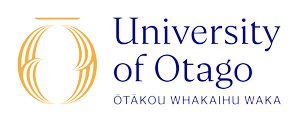Clinical outcomes and health care costs of transfers
Alexander M, Lan NS, Dallo MJ, Briffa TG, Sanfilippo FM, Hooper A, Bartholomew H, Hii L, Hillis GS, McQuillan BM, Dwivedi G. Clinical outcomes and health care costs of transferring rural Western Australians for invasive coronary angiography, and a cost‐effective alternative care model: a retrospective cross‐sectional study. Medical Journal of Australia. 2023 Jul 4.
2023-09-06This is an interesting paper kindly forwarded by Brendan Marshall. The authors devised a novel protocol where patients with chest pain (excluding STEMI) who presented to a rural hospital in Western Australia would have a CTCA before any transfer for angiography.
They then looked retrospectively to apply this novel pathway on patients that were transferred for angiography and examined the costs. Patients that were transferred for angio included those with NSTEMI, troponin ‘negative’ chest pain and “other”.
The headline by the authors was that providing a CTCA in a rural hospital before transfer for angiography would prevent 53% of patients from needing transfer (and save a bucket load of cash).
Many of these patients who were transferred for angiography had normal troponin concentrations (38.7%) or other reasons (valvular heart disease, cardiomyopathy e.t.c. (18.2%). These patients was where the majority of the savings came from
In NZ, I don’t think many of these patients would be transferred for angiography as an inpatient anyway, perhaps reflecting vastly different practice. Very few (6.2%) of the group in with NSTEMI would have been able to remain in a rural hospital after a proposed CTCA first protocol.
Not transferring NSTEMI for angiography in those that are well enough to benefit from an invasive procedure is a departure from current Australian and NZ guidelines.
CTCA requires upgraded software and 64-slice CT scanners (and training e.t.c) which is apparently prohibitive in our relatively well resourced rural hospital at Thames anyway. Although undoubtedly better diagnostic value compared to ETT!
Abstract
Objectives: To examine the severity of coronary artery disease (CAD) in people from rural or remote Western Australia referred for invasive coronary angiography (ICA) in Perth and their subsequent management; to estimate the cost savings were computed tomography coronary angiography (CTCA) offered in rural centres as a first line investigation for people with suspected CAD.
Design: Retrospective cohort study.
Setting, participants: Adults with stable symptoms in rural and remote WA referred to Perth public tertiary hospitals for ICA evaluation during the 2019 calendar year.
Main outcome measures: Severity and management of CAD (medical management or revascularisation); health care costs by care model (standard care or a proposed alternative model with local CTCA assessment).
Results: The mean age of the 1017 people from rural and remote WA who underwent ICA in Perth was 62 years (standard deviation, 13 years); 680 were men (66.9%), 245 were Indigenous people (24.1%). Indications for referral were non‐ST elevation myocardial infarction (438, 43.1%), chest pain with normal troponin level (394, 38.7%), and other (185, 18.2%). After ICA assessment, 619 people were medically managed (60.9%) and 398 underwent revascularisation (39.1%). None of the 365 patients (35.9%) without obstructed coronaries (< 50% stenosis) underwent revascularisation; nine patients with moderate CAD (50–69% stenosis; 7%) and 389 with severe CAD (≥ 70% stenosis or occluded vessel; 75.5%) underwent revascularisation. Were CTCA used locally to determine the need for referral, 527 referrals could have been averted (53%), the ICA:revascularisation ratio would have improved from 2.6 to 1.6, and 1757 metropolitan hospital bed‐days (43% reduction) and $7.3 million in health care costs (36% reduction) would have been saved.
Conclusion: Many rural and remote Western Australians transferred for ICA in Perth have non‐obstructive CAD and are medically managed. Providing CTCA as a first line investigation in rural centres could avert half of these transfers and be a cost‐effective strategy for risk stratification of people with suspected CAD.
